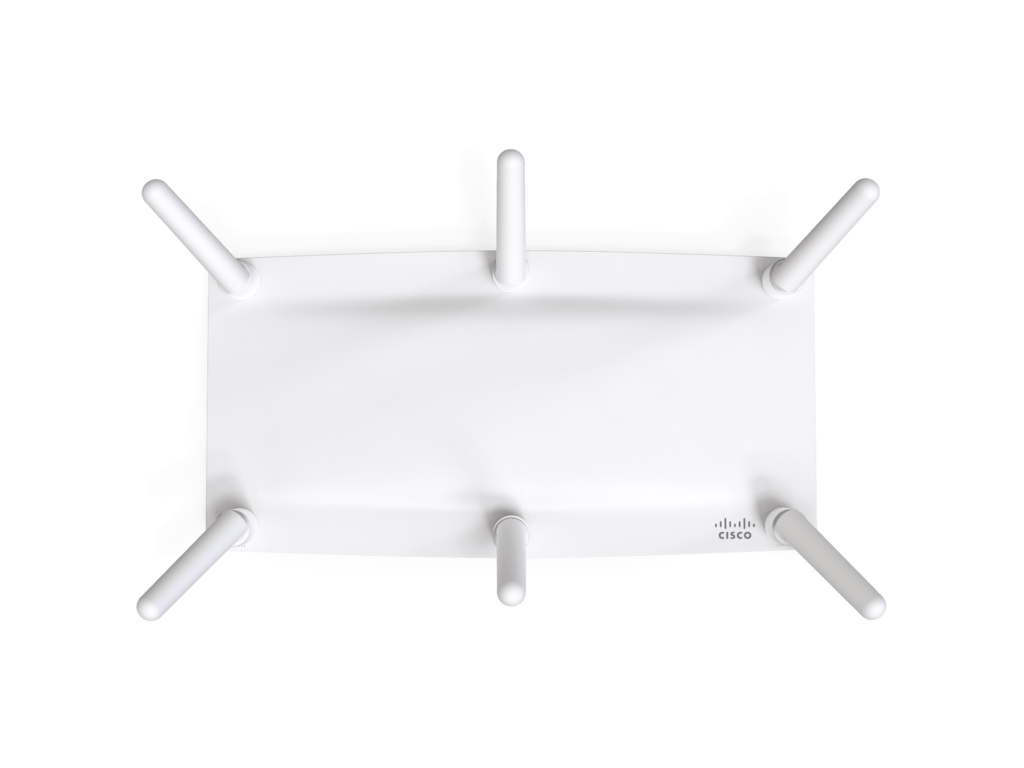
Access points are critical components in modern network infrastructure, providing the connectivity and performance necessary for both small- and large-scale deployments. With the growing demand for high-speed, reliable wireless networks, choosing the right access point is essential. This article aims to compare two advanced models from Cisco Meraki: the Meraki MR44 and Meraki MR46. By examining their features, performance, security, and usability, we aim to help you determine which model best suits your network requirements.
The Cisco Meraki MR44 is a cloud-managed 2×2:2 + 4×4:4 802.11ax access point designed to offer high throughput and efficiency for next-generation deployments. Key features include a maximum aggregate frame rate of 2.7 Gbps, enterprise-grade security, and simplified management through the Meraki cloud platform. The MR44 is ideal for high-density environments such as offices, schools, hospitals, and retail spaces where performance and reliability are paramount.
The Meraki MR46, also a cloud-managed access point, features a 4×4:4 802.11ax configuration, delivering an impressive maximum aggregate frame rate of 2.98 Gbps. Designed for demanding deployments, the MR46 offers enhanced performance and coverage, making it suitable for large enterprises, educational institutions, and healthcare facilities. Key features include advanced security, automated RF optimization, and easy cloud management.

The MR44 provides a dual-radio aggregate frame rate of 2.7 Gbps, with up to 2,402 Mbps on the 5 GHz band and 287 Mbps on the 2.4 GHz band. The MR46 surpasses this with a 2.98 Gbps aggregate frame rate, delivering up to 2,402 Mbps on the 5 GHz band and 574 Mbps on the 2.4 GHz band. Both models leverage MU-MIMO and OFDMA for efficient data transmission, but the MR46 offers a slight edge in maximum speed and client handling capabilities.
Both the MR44 and MR46 are designed to provide extensive coverage in various environments. The MR46’s enhanced transmit power and receive sensitivity enable it to support a higher client density and broader coverage area compared to the MR44. In environments with obstacles and interference, the MR46’s superior hardware configuration ensures more reliable performance and connectivity.
The MR44 integrates robust security features, including AES hardware-based encryption and support for WPA3 and 802.1X authentication. It also includes a dedicated third radio for real-time WIDS/WIPS, providing continuous monitoring and protection against wireless threats.
The MR46 offers similar security capabilities with AES encryption, WPA3, and 802.1X authentication. Additionally, it features an integrated layer 7 firewall, ensuring comprehensive protection for all connected devices. The dedicated third radio for WIDS/WIPS enhances its security posture, making it a reliable choice for environments requiring stringent security measures.
Both the MR44 and MR46 are designed for easy installation and configuration. Managed through the Meraki cloud, these access points can be set up remotely in minutes, even without on-site IT staff. Their plug-and-play deployment ensures minimal disruption and fast network rollout.
The Meraki dashboard provides an intuitive, browser-based interface for both the MR44 and MR46, offering comprehensive configuration options and accessibility. Administrators can monitor network performance, apply security policies, and troubleshoot issues seamlessly from any location.
Both models are compatible with a wide range of devices and networks, ensuring smooth integration into existing infrastructures. Their support for various wireless standards and security protocols guarantees interoperability and future-proofing for evolving network demands.
The MR44 is typically more cost-effective than the MR46, making it an attractive option for budget-conscious deployments. However, the MR46’s advanced features and performance justify its higher price point for organizations requiring superior capabilities.
Both models benefit from Meraki’s cloud-managed platform, which reduces the need for costly on-site maintenance and updates. Automatic firmware updates and remote diagnostics help keep long-term costs low and predictable.
While the MR44 offers excellent value for money with its robust performance and security features, the MR46 provides additional benefits that may justify the extra investment for high-density and performance-critical environments.
Cisco Meraki offers comprehensive support for both the MR44 and MR46, including 24/7 technical assistance and access to a wealth of online resources. Their customer support is known for its responsiveness and expertise, ensuring that any issues are promptly resolved.
Both models come with a lifetime hardware warranty, including advanced replacement services. This ensures that any hardware failures are quickly addressed, minimizing downtime and maintaining network reliability.
In comparing the Meraki MR44 vs MR46, both models stand out for their performance, security, and ease of use. The Meraki MR44 offers a balance of cost and capabilities, making it suitable for a variety of environments. However, the Meraki MR46 provides enhanced performance and coverage, making it ideal for demanding and high-density deployments. Ultimately, the choice between the two will depend on your specific network requirements and budget. Both access points deliver the reliability and advanced features synonymous with Cisco Meraki, ensuring robust and efficient wireless networking for any organization.
Still have questions about Cisco Meraki product features? Contact Stratus Information Systems for detailed insights and support.

Stay informed about our newest releases and updates